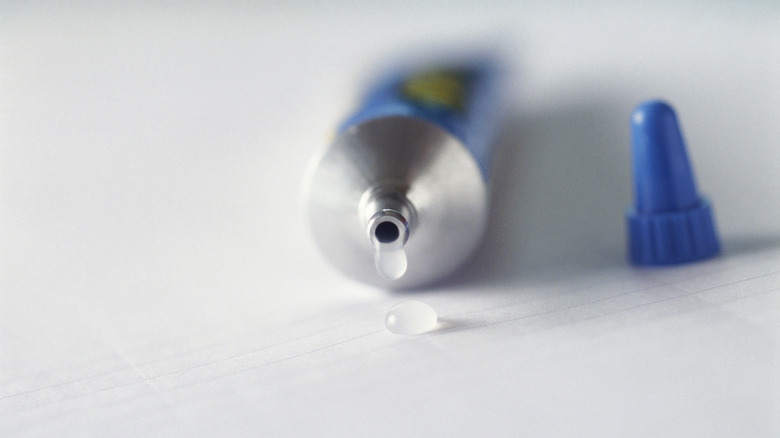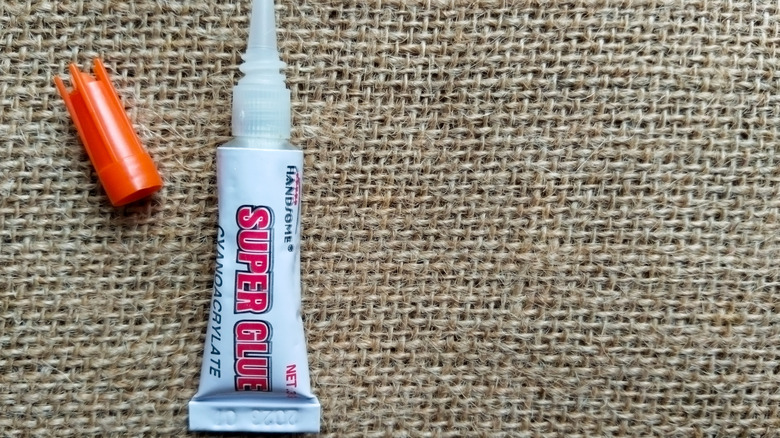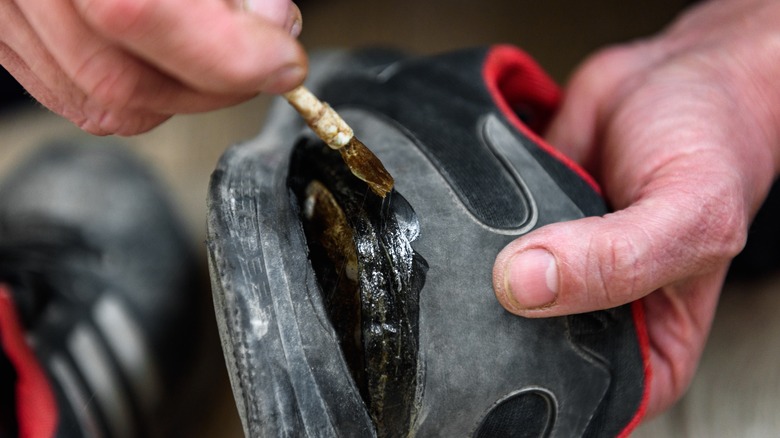The Best Glues For Bonding Rubber You Should Have On Hand
We may receive a commission on purchases made from links.
Bonding rubber to other materials, including rubber, can be a sticky challenge — or rather, not sticky enough. If your trusty hot glue gun can't help in this situation, what can? It depends what type of rubber you're bonding and what you're bonding it to. But if we're going with "best overall glue," that title belongs to cyanoacrylate adhesives, better known as super glue. It cures in seconds, and you can make your super glue cure even faster with an activator spray if you're in a time crunch or facing tough curing conditions like low humidity.
A small drop of super glue should get the job done, and thanks to its ultra-fast curing time, you'll find out pretty quickly whether or not it's the right glue for the job. If the bonds fail, there are a couple options: you could try using a two-part super glue instead, or if you're working with something like silicone or natural rubber, you may need to use a different glue altogether.
To give your cyanoacrylate adhesive its best possible chance to stick, prep the rubber surface by cleaning and degreasing with isopropyl alcohol to remove any chemicals that could make it harder for the glue to bond. Make sure both surfaces you're trying to bond are dry before you apply the super glue, and when you're done, store it in a cool, dry place away from direct sunlight to extend your super glue's shelf life.
How to use two-part super glue for rubber
If regular super glue isn't quite strong enough, don't count cyanoacrylate adhesives out yet — you may be able to use the two-part version, like this two-step Loctite cyanoacrylate plastics bonding system. The product's technical data sheet says you can use it for a variety of materials, such as Plexiglas, polycarbonate, polystyrene, PVC, polyethylene, polypropylene and polytetrafluoroethylene, but recommends against use on foam rubber or silicon rubber.
To bond rubber with a two-part super glue, prep and dry your surfaces like you would for regular super glue — and don't skip this step, as that's a common mistake in using super glue around the house. Then, take the bottle of activator and apply it to both surfaces and let it dry for about a minute. Next, apply a thin layer of the glue to only one of the surfaces you're attempting to bond. Line up your surfaces and press them together for at least 30 seconds, then leave it alone for at least 10 minutes to allow the bonds to strengthen. It should be fully cured in 12 to 24 hours.
Glues for bonding rubber when super glue isn't working
If cyanoacrylate adhesives still aren't working, you may be dealing with a more challenging rubber to bond, like natural rubber, silicone rubber, or EPDM rubber. That doesn't mean your rubber is un-glueable, just that you may have to try a different option like contact adhesives or rubber cement.
To use a contact adhesive like this WEICON GMK 2410 contact adhesive, prep and dry your surfaces. For extra sticking power, you can even rough up your surfaces with a light sanding. Then, apply a thin layer of the adhesive to both surfaces and let it begin to dry. You may need two or three layers for harder-to-stick surfaces. Once the glue feels tacky after around five to 10 minutes, press your surfaces together. The contact adhesive should reach its full bond strength after 24 hours.
You can also try using a rubber cement like this Gorilla rubber cement. Just clean and dry your surfaces, then use the bottle's brush to apply a layer of the adhesive. For a bond you can reposition as it dries, apply to only one surface and stick them together immediately. For a stronger and more permanent bond, apply to both surfaces and wait until the glue feels tacky, then stick your surfaces together. It fully cures and reaches its maximum bond strength in 24 hours. Whatever adhesive ends up being right for your rubber bonding, good luck and happy gluing!


